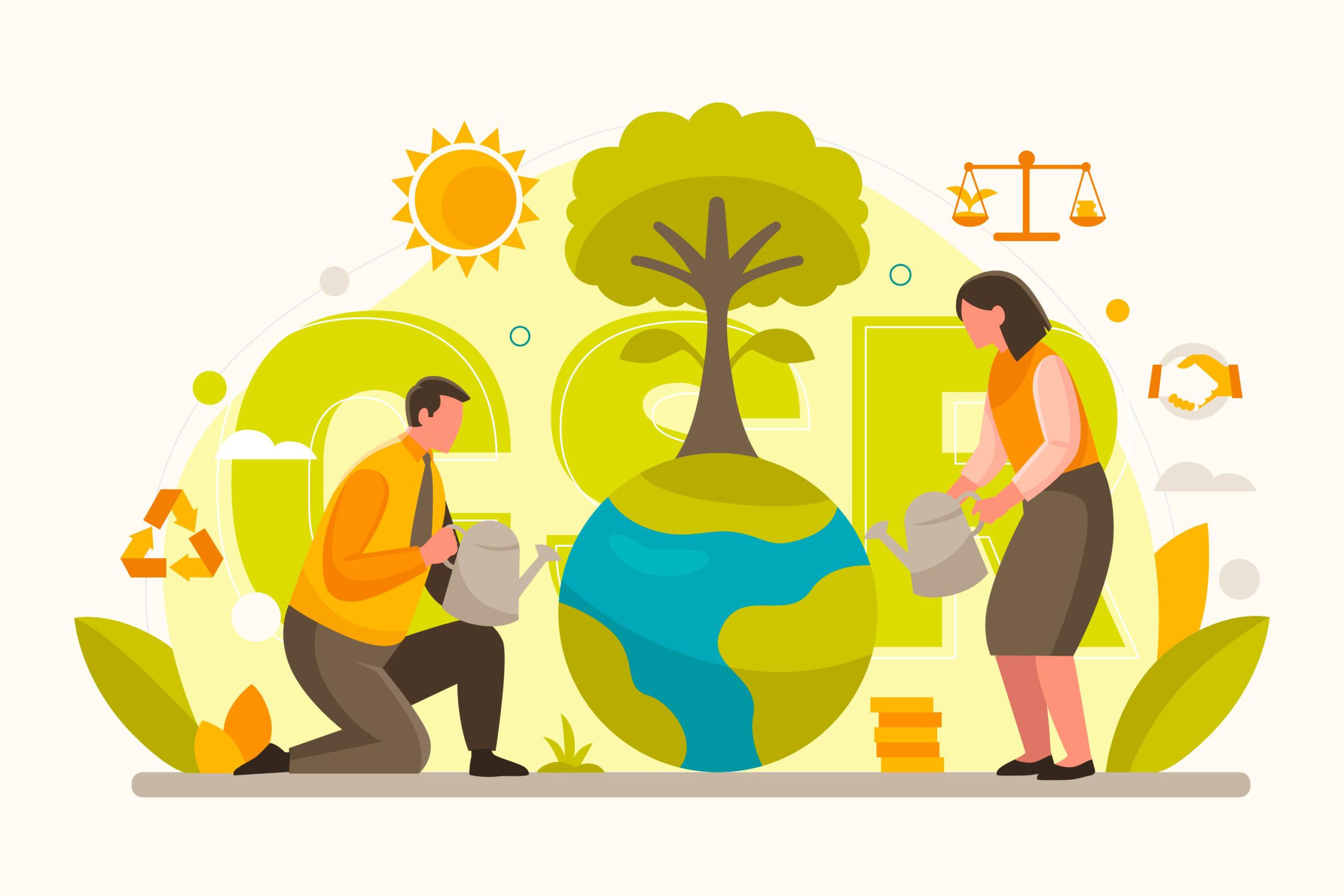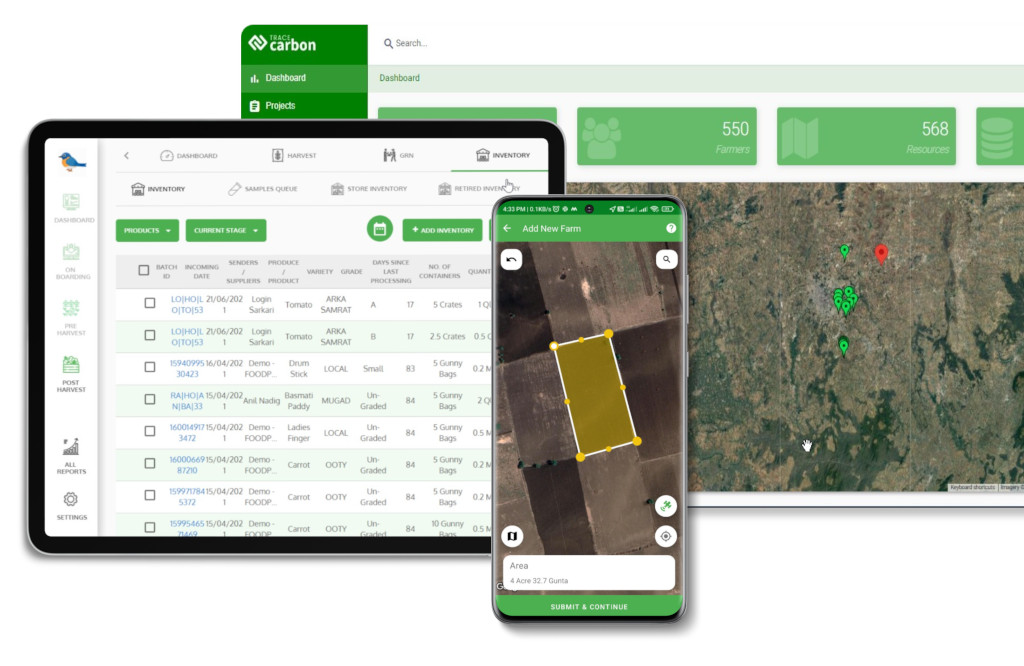Contact: +91 99725 24322 |
Menu
Menu
Quick summary: Discover how digital traceability drives food system transformation by ensuring transparency, compliance, and sustainability from farm to fork.

Digital traceability transforms agriculture by creating a transparent, end-to-end view of the food supply chain from plot to port and enables stakeholders to track where food comes from, how it was grown, and whether it meets environmental and regulatory standards. TraceX traceability platform makes this seamless by capturing geolocation data, digitizing farm activities, and linking every input to its final output
Most agri-supply chains today are a black box — fragmented, opaque, and disconnected from the farms they source from. That’s a growing liability in a world demanding sustainability, compliance, and accountability. End to end visibility is essential to tackling deforestation, reducing emissions, meeting evolving regulations like EUDR and CSRD, and empowering farmers with data-driven tools.
Key Takeaways
Food system transformation means shifting from opaque, linear supply chains to sustainable, transparent, and resilient networks. Today’s food supply chains are under pressure—facing challenges like climate change, deforestation, labor exploitation, and rising compliance demands.
Digital traceability in agriculture provides the visibility needed to solve these issues. It connects every actor in the supply chain—from farm to fork—with real-time, verifiable data on origin, practices, inputs, and compliance.
TraceX’s food traceability solutions enable agribusinesses to digitize farm records, track inputs, monitor sustainability metrics, and prove compliance with global standards—driving the transformation to a safer, more ethical, and future-ready food system.
Food system transformation means rethinking how we grow, move, process, and consume food — with the goal of making it more sustainable, transparent, and inclusive.
It’s not just about healthier meals or greener farms. It’s about rebuilding the entire value chain to work for people, for the planet, and for future generations.
“Over 70% of agricultural emissions come from just 8 commodities — yet less than 10% of them are traceable to source.”
This isn’t just a compliance checklist. It’s a business transformation opportunity.
When you trace back to the root of your food system, you don’t just comply — you lead. You earn consumer trust, meet ESG goals, and future-proof your brand.
Want to explore how traceability supports ESG and sustainable sourcing?
Dive into our expert blogs that show how businesses are turning compliance into competitive advantage:
Many food supply chains still rely on manual processes: clipboards, WhatsApp messages, and Excel files. That might have worked when volumes were low and risks were local.
But with global sourcing, climate volatility, and evolving regulations, this fragmentation becomes a liability.
Can you say exactly what went into your raw materials? Who grew them, how, and where?
Most brands can’t. And that’s a problem when you’re expected to prove your products are safe, sustainable, and deforestation-free.
The food system is transforming — but many supply chains are stuck in the past. Compliance isn’t the only issue here. What’s at stake is market access, brand trust, and long-term resilience. Brands that modernize now aren’t just solving for today — they’re future-proofing for tomorrow.
Digital traceability is the use of technology to track agricultural products, inputs, and practices across every step of the supply chain — from farm to fork. It turns invisible processes into actionable, auditable data.
Farm → Inputs (seeds, fertilizers) → Harvest → Processing → Packaging → Retail
Every step is logged. Every input is verified. Every actor in the chain is accountable.
Whether you’re an EU importer, agri-exporter, F&B brand, or sustainability manager — chances are you’re feeling the pressure:
Digital traceability isn’t just a compliance checkbox — it’s your competitive edge.
In a world that demands proof of sustainability, transparency, and ethical sourcing, traceability is the backbone of modern agriculture.
The brands and producers that invest in it today won’t just pass tomorrow’s audits — they’ll win tomorrow’s markets.
Food supply chains are no longer just about moving goods. They’re about proving impact. Traceability is no longer a “nice-to-have” — it’s the engine powering real change across global agriculture.
From sustainability goals to compliance headaches to climate resilience — traceability is what turns good intentions into measurable action.

If you’re sourcing cocoa, palm oil, wood, or soy, the EU (and your customers) want proof — not promises.
Digital traceability links every product back to the land it came from, with GPS coordinates, satellite validation, and time-stamped records. It shows whether a farm is deforestation-free, who owns the land, and what practices are being used.
This level of sourcing transparency helps brands:
Staying compliant isn’t optional — especially when export markets tighten rules around safety and sustainability.
Whether it’s FSMA in the U.S. or EUDR in the EU, you’ll need data like:
With digital traceability platforms, these documents can be auto-generated and linked directly to TRACES, customs systems, and audit dashboards — slashing manual work and reducing the risk of rejections or delays.
Smallholder farmers are on the frontlines of climate change. But too often, they’re overwhelmed by paperwork, under-credited for good practices, and left out of digital systems.
Here’s where traceability flips the script:
For agri-exporters and buyers, it means data-backed sourcing. For farmers, it means inclusion — not exclusion — in global value chains.
“Digital traceability isn’t just about compliance — it’s about giving farmers a voice in the system.”

Food system transformation isn’t just a theory anymore — it’s a survival strategy.
Buyers are demanding proof. Governments are enforcing it. And consumers are choosing brands that back up their claims.
Traceability delivers the data, structure, and trust needed to lead in this new era — whether you’re exporting mangoes, importing soy, or building the next sustainable brand.
TraceX’s digital traceability platform is built for agriculture and food systems. It provides end-to-end visibility from the farm to the consumer, ensuring that every product can be tracked back to its origin — with proof of practices, compliance, and sustainability at every step.
TraceX digitizes the farm — capturing data on plots, inputs (fertilizers, pesticides), practices, and harvests.
Collected via mobile apps (even offline) by farmers, FPOs, or agribusiness field staff.
Each production plot is geotagged, enabling satellite-based monitoring of land use, forest cover, and changes over time.
Ensures compliance with EUDR and other deforestation-free mandates.
TraceX links every actor in the supply chain — farmers, processors, aggregators, logistics providers — through digital transaction logs.
Tracks movement of batches from source to shelf.
The platform auto-generates key documents like:
Ready for EUDR, FSMA, BRC, and other global compliance needs.
Every transaction is recorded immutably, ensuring data integrity and enabling trust among stakeholders.
Tamper-proof, auditable, and QR-code verifiable by consumers or regulators.
Built-in AI models provide:
Who Is It For?
Traceability isn’t just a digital upgrade — it’s a foundational shift. For any food system to become sustainable, resilient, and compliant, you first need to see clearly — where your food comes from, how it’s grown, and who’s involved. That’s what traceability delivers. Whether you’re an AEO, a global buyer, or a compliance manager navigating EUDR and FSMA, digital traceability gives you the visibility, credibility, and control to lead in the new food economy. Transformation starts here — one plot, one product, one step at a time.
It captures geolocation, supplier data, and batch-level history, enabling automatic generation of Due Diligence Statements (DDS) and audit-ready documentation.
Yes. Platforms like TraceX integrate with systems like TRACES and provide APIs for customs data flow, reducing manual intervention and risk of error.
By bringing transparency to sourcing practices, it enables sustainability, farmer inclusion, and ethical trade — turning compliance into a catalyst for long-term impact.
Ready to Future-Proof Your Food Supply Chain?
Explore how digital innovation, blockchain, and sustainability-first strategies are transforming the way food moves from farm to fork:
